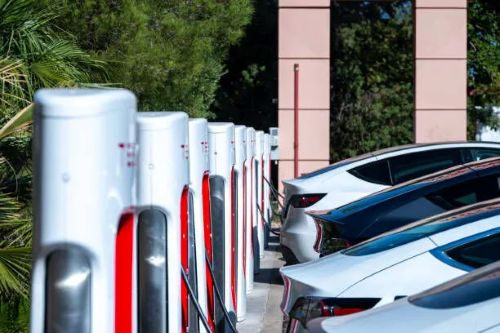


Charging Ahead into the Future: The Rise of Ultrafast DC Charging
As electric vehicles (EVs) rapidly gain popularity worldwide, the demand for faster, more reliable charging solutions is growing. At the forefront of this evolution is ultrafast DC charging, also known as high-power charging (HPC). This technology delivers high power output, drastically reducing charging times and transforming the EV ownership experience.
Ultrafast DC chargers typically provide power from 150 kW up to 600 kW, allowing an EV battery to recharge to 80% in under 30 minutes—sometimes as fast as 10 to 15 minutes. This rapid charging capability is not only about speed; it reshapes how drivers perceive and use electric mobility.
EV charging is broadly divided into two types:
AC Charging (Levels 1 and 2) uses alternating current from home or public outlets. The vehicle’s onboard charger converts AC to DC for the battery, which limits charging speed.
DC Charging bypasses the onboard converter by delivering direct current straight to the battery, allowing for much higher power levels and faster charging.
| Level | Voltage | Charging Speed | Typical Use |
|---|---|---|---|
| Level 1 | 120V | 3-5 miles range/hour | Home charging (standard outlet) |
| Level 2 | 240V | 15-30 miles range/hour | Residential & commercial locations |
| Level 3 (DC Fast) | 400V–1000V | 100–200+ miles in 15-30 minutes | Highway stations, fleet depots |
Significantly Reduced Charging Times
Ultrafast chargers cut charging times to near gasoline refueling speed, making EVs more practical for everyday use and attracting new adopters.
Supports Long-Distance Travel
Strategic placement of ultrafast stations along highways eliminates “range anxiety” by ensuring reliable charging on longer trips.
Boosts Commercial Fleet Efficiency
Fleets for delivery, ride-sharing, and public transit can minimize downtime, improving operational productivity and accelerating electrification.
Strengthens Infrastructure Readiness
Expanding ultrafast networks builds consumer confidence and scalability in the EV ecosystem.
Improves Urban Charging Access
For city dwellers without home chargers, ultrafast DC stations offer quick, convenient charging options that save time and space.
Ultrafast charging relies on:
High-voltage EV architectures (800V+) to accept rapid power
Liquid-cooled cables for safe, high-current transfer
Smart communication protocols that optimize charging based on battery condition
Advanced thermal management to prevent overheating
Popular standards include CCS, CHAdeMO, and Tesla Superchargers, ensuring high-speed, safe, and interoperable charging.
Grid Demand: High power draws require grid upgrades and energy storage integration.
Installation Costs: Ultrafast stations are costlier than slower chargers but expected to become more affordable.
Vehicle Compatibility: Not all EVs currently support ultrafast speeds; full compatibility will take time.
Battery Health: Frequent fast charging may impact battery lifespan; ongoing research aims to reduce this effect.
Europe leads with networks like Topper offering 350 kW chargers on major highways. The U.S. is expanding its National Electric Vehicle Infrastructure program, while China builds thousands of high-power stations to support its massive EV fleet. The global ultrafast DC charging market is forecasted to exceed $25 billion by 2030.
Integrating renewable energy and battery storage with ultrafast charging can reduce grid pressure and operating costs, promoting sustainable transportation.
Future innovations may include wireless DC charging, AI-managed load balancing, vehicle-to-grid integration, and compact urban chargers designed for tight city spaces.
Ultrafast DC charging is a crucial enabler of EV adoption, reducing charging times and improving infrastructure reliability. It makes EVs more accessible and convenient for consumers, more efficient for businesses, and more sustainable for cities. As technology advances and networks expand globally, ultrafast charging will lead the transition to a zero-emissions future.Know more about Google SEO Directory
